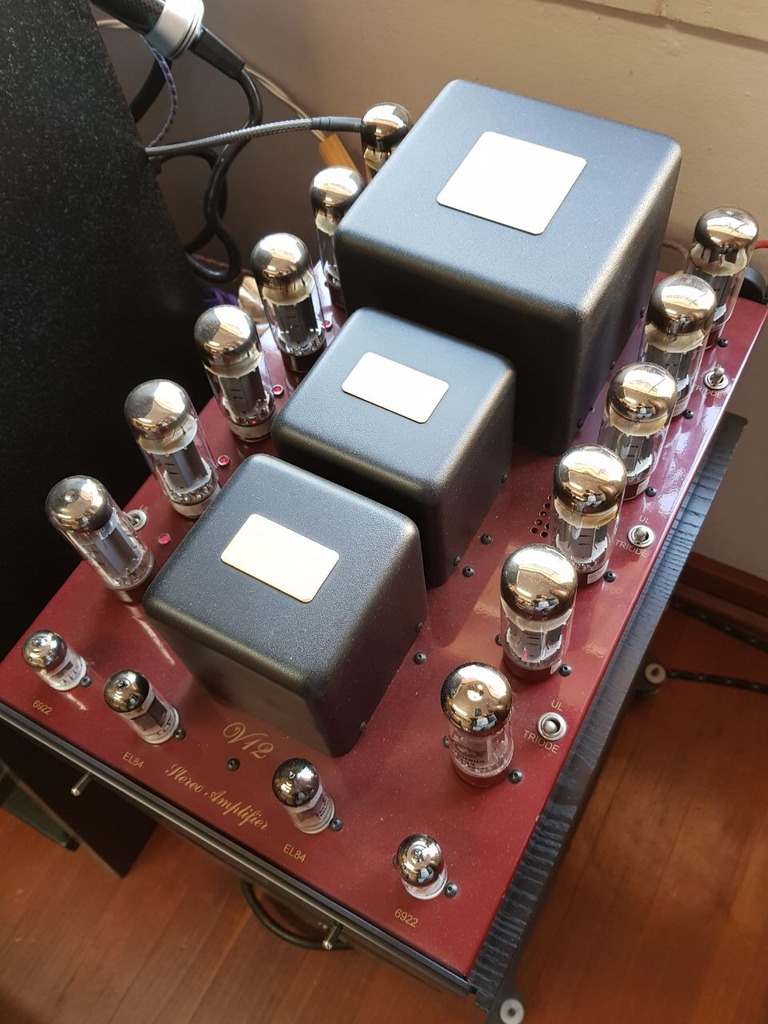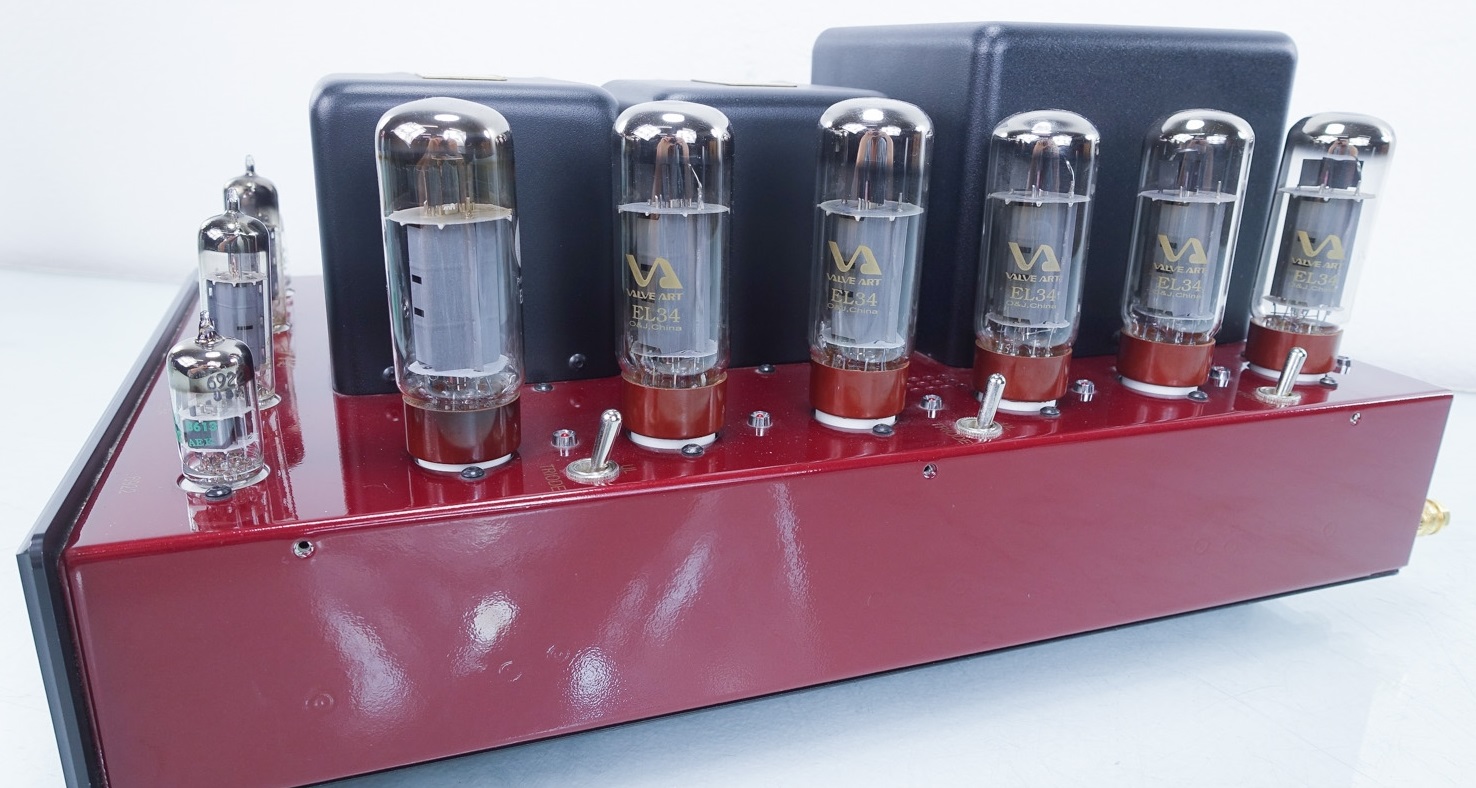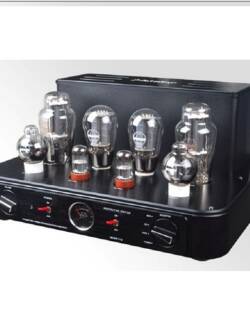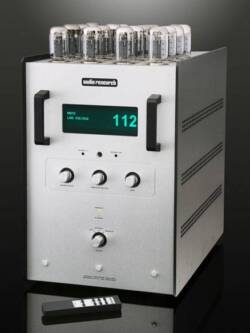Cary Audio CAD280SA V12 Power Amplifier
Original price was: R120,000.00.R64,000.00Current price is: R64,000.00.
According to Cary Audio designer Dennis Had in this amplifier’s documentation, “Countless hours were spent designing and voicing the CAD-280SA V12 stereo amplifier…It delivers high performance in a combination of class-A single-ended triode and true balanced push-pull technology.”
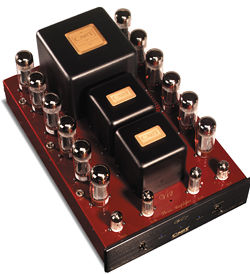 Whew, I thought to myself. Push-pull. Thank goodness—it oughta measure pretty well. I read on.
Whew, I thought to myself. Push-pull. Thank goodness—it oughta measure pretty well. I read on.
“The new V12 is created by a stunning combination of the world-famous CAD-805 soundstage, the glorious midrange of the CAD-300-SE, and the supercharged power of the CAD-211-Ms.”
Never above a little high-minded self-promotion, eh, Mr. Had?
“The V12 is designed with a fresh and uncompromising push-pull circuit in every criterion. In reality, think of the V12 as four single-ended class-A amplifiers operating in a combined balanced configuration.”
In reality, think of John Atkinson having to measure four separate amplifiers instead of one! Heh-heh…In case you were wondering, all four amps on this stereo chassis operate without any form of negative feedback.
“Another design criterion was to utilize only modestly priced vacuum tubes available from multiple tube manufacturing sources. For those of you not aware, I am a triode-crazed audiophile.”
I wondered who might not be aware of that by now.
“Do EL34s or KT88s have any merit? They sure do! Simply take a look at their curves when connected in the triode mode. Looks similar to the good old 300B or 2A3. Even the 6L6 looks like a great tube when run in triode configuration.”
I coulda Had a V8!
The Cary CAD-280SA V12 is a handsome amp, and smaller than its name might lead you to think. In fact, it’s an interesting combination of the neat’n’petite and pure flamboyance. The chassis top is finished in a deep, lustrous “Jaguar Carnival Red.” Two output transformers are centered in front of a larger, somewhat imposing power transformer on the top plate, all encased in matte-black covers with rounded-off corners and gold labels on top. The EI-laminated power transformer has a 200% duty cycle; the two output transformers are EI-laminated, and silicone-impregnated to boot.
Down either side of the top chassis sit the 12 output tubes, a red LED indicator behind each one, next to a Triode/Ultralinear toggle switch for each tube pair. Arrayed across the front of the top plate are the small-signal tubes: The outside pair are 6922s configured as inputs, while the inner two are slightly taller SV83/EL84s, used to supply the current to drive the output tubes.
The low-profile front panel is of nicely machined, black-anodized aluminum with a power On/Off toggle on the left, a high-voltage On/Off toggle on the right, between them three small blue LEDs to indicate the presence of high voltage and left- and right-channel bias voltage.
The rear apron sports both RCA and XLR inputs, selectable with a toggle switch, and three five-way binding posts: two red ones (positive) for 4 and 8 ohms, and a single black one (negative) for ground. A standard IEC power-cord socket is centered on the rear panel, above an array of fuses. The two outer fuses are for tube protection (0.5A, fast-blow, 250V); between them are a power AC fuse to protect the power transformer from over-current (3A, slow-blow, 250V), and another (2A, slow-blow) to protect the filament transformer windings from over-current.
Audiophile goodies include 1% metal-film resistors, oil-filled capacitors, and four 560µF power-supply capacitors rated at 400V.
Circuit and tubes
The CAD-280SA V12 is capable of performing in two classes of operation. “The absolute best sounding mode is class-A triode,” Dennis Had proclaims in the manual. In triode, the V12 belts out a healthy 50Wpc. For headbanger listening sessions, you might want to select class-AB ultralinear operation for 100W; or 2/3 triode, 1/3 ultralinear for 65W. Had told me it’s okay to run the amp “mixed-mode,” but despite that, the manual urges you to “Make sure all six switches are set to the same position.” Changing modes of operation can be done on the fly by simply flipping the six toggle switches on the chassis top, even as music plays. To keep the waveform symmetrical, if running 2/3 triode and 1/3 ultralinear, you must flip only the center two switches into UL. But “I can tell you that the sound of class-A triode operation is truly the best mode for serious music listening,” insists Mr. Had.
The output stage uses twelve EL34 output tubes with a fixed-bias topology that supplies an equal negative-bias voltage “to ensure maximum linearity.” This biasing scheme allows the use of many different output tubes—you can run KT88s, 6550s, KT90s, KT66s, or 6L6s! “One might even wish to listen with 6V6s!” the manual enthuses, without explaining why one might wish this. Output power is 50Wpc in triode with EL34s, KT88s, 6550s, or KT90s. KT66s, 6L6s, and 6V6s are lower-dissipation tubes that yield 30-35W in triode. “Speaking of output power,” the manual states, “your new V12 has a peak power envelope of 72W into an average loudspeaker load in triode mode.” I wondered, wickedly, at what distortion level that might be. I’m sure JA will have an answer.
Each type of output tube presents its own sonic signature, but I reviewed the CAD-280SA V12 with the supplied matched pairs of Ruby EL34s. If you decide to do a little tube rolling, or if a tube goes down and you replace the pair (you’ll need six matched pairs of output tubes for the V12), or if you just wear out your fire bottles over time and need to replace them all, you have to go through a bias-adjustment routine for each channel. (The V12 is biased at the factory before shipment and the tubes are marked for each socket; as delivered, the amp is ready to fire up without fuss.)
Each channel sports a bias potentiometer on the rear panel, with a locknut and a ¼” jack for your voltmeter (VOM). In addition, there are the little red LEDs that sit behind each tube on the top chassis. “These LEDs can be referred to as the ‘good health’ tube indicators,” writes the ever-whimsical Had in the manual. “With just a simple glance you’ll be able to see that each tube is functioning properly by the red glow of its LED. You can even bias the V12 using just the 12 LEDs if you don’t have a VOM.”
Here’s how it works. If the amp is new, just stuff the tubes into the sockets, matching the numbers on the box with the tube positions indicated in the manual. When installing a new set of 12—or just a matched pair, if you’ve discovered a bad tube—begin by twisting one or (if required) both bias pots on the rear panel all the way counterclockwise. Then light up the amp by flipping the power On switch and watch for the three small blue LEDs (high voltage, left- and right-channel bias voltage) centered on the front panel to come on. Switch from Standby to Operate and make sure all the output-tube filaments light up.
Then check each of the 12 red LEDs behind the tubes; they should not be lit, because you’ve turned the bias voltage all the way down. (When the amp is operating normally after bias is correctly set, the red LEDs pop on to indicate that the tubes are conducting and you’re ready to play music.) After you’ve watched the output-tube filaments light up, grab a beer (or a V8!) and wait about five minutes for the tubes to warm. Then take a flat-blade screwdriver and slowly advance the bias pot clockwise until the red LEDs begin lighting up. “When you have reached equal brilliance on each tube’s LED, stop any further adjustment,” the manual instructs. You can then back it off slightly and do it again so that all the LEDs just light up. “DO NOT ADVANCE BEYOND THIS POINT!!!!!!!!!!!” (I swear, that’s how many exclamation points are used in the manual.) Then do the same for the other channel, if necessary.

Congratulations, pilgrim—you’ve just brought your amp into proper operating bias. A more exacting method involves inserting a voltmeter set to read out in DC milliamps into the ¼” bias jack with the supplied adapter, lighting up those red LEDs, then fine-tuning each channel for 275-300mA of DC current. Manual: “Please, please, remember this is a DC current reading and not DC voltage!” Okay, okay, Dennis—don’t bunch your shorts about it!
It’s pretty clever, actually; the red LEDs can also be used to troubleshoot the amplifier if you start blowing the 0.5A tube fuses. If one blows, it indicates excess current draw in class-AB ultralinear operation or a defective output tube. To check which tube it is, take a gander at the red LEDs. If one of them is dark, that’s the tube that’s NG. Or if you turn down the bias pot on one channel and one LED stays lit long after the others have gone off, that also indicates a defective tube. “With a modest voltage of 365VDC on the output tubes, a defective tube will be a rare occurrence. Tubes should last upwards of five or more years in your new V12 amplifier,” informs the manual.
But Murphy’s Law has yet to be repealed, as I discovered when one of the Ruby EL34s blew a fuse. That brought the whole channel down, heralded by a slight but ominous popping noise through the speakers. I replaced the fuse, but the new one blew only a few hours later. I realized that the problem wasn’t an anomaly and went through the above routine: fiddled the bias pot on the right channel, found the bad tube, and replaced a matched pair that had come with the amp. After rebiasings to 275mA, I never had another pop or burp of trouble.
It’s no big deal to rebias the V12. In fact, a few days after delivery, I checked both channels, and while they closely matched each other, they were a little low at 263mA. I upped both sides to the recommended 275mA and lived happily ever after.
Pedal to the metal
I started with Analogue Productions’ reissue of Duke Ellington’s This One’s for Blanton (CAP-J015), a limited-edition 24k gold CD from Chad Kassem at Acoustic Sounds. The piano sound was excellent, the Duke’s instrument less tinkly-sounding via the Cary CAD-280SA V12 than I’ve experienced through some solid-state amps, although it was still a bit on that side of things. Ray Brown’s bass was wonderfully rich, full, and deep, and the soundstage was enormous and encompassing—way outside the speakers in a most enjoyable way. The V12 seemed fast, the timing of Brown’s bass working hand in hand with the sharpish tone of Duke’s piano—musically very appropriate. The presentation on “Things Ain’t What They Used to Be” was to die for, the timing interactions of Ellington and Brown so evident, the sound so lovely and luminous, without ever becoming in any way euphonized in the negative tube sense. The music was just there, laid out before me to enjoy and relish, round and fleshly, palpable and detailed.
“Sophisticated Lady” leads with a Ray Brown solo that I mentioned in my review of the amplificationreviews/Lamm Industries L2 preamplifier in the May 2001 issue—it’s one of the greatest acoustic bass solos I’ve ever heard. Brown’s fingerwork was so well explicated, the tonal balance so superb and enjoyable, that I found it hard to criticize the sound in any way. I had to keep pinching my ass to remind myself that the fullness, power, and depth I was hearing in the bass were courtesy of a paltry 50W! Notes: “The air and ambience are as good as it gets, the Lamm L2 a beautiful match with the Cary.” Swingin‘, baby!
Take “Roots,” from Count Basie and Oscar Peterson’s Satch and Josh…Again (Pablo OJCD-960-2), but don’t take it too far—I’d dearly miss it and would have to kill you! It’s just a plain ol’ OJC of a classic Pablo produced by Norman Granz, with Basie and Peterson on pianos, John Heard on bass, and the great Louis Bellson on drums. It was recorded in 1977 by engineer Val Valentin and remastered in ’98 by Joe Tarantino at Fantasy Studios, Berkeley. There’s no way to be more drenched in bluesy, locked-in-time jazz than kickin’ back, firin’ up the V12 and a fine preamp, and playin’ this CD. The music is sublime; I can’t imagine how much better it could possibly get. The cushiness, tonal color, and fullness to the sound were entirely soul-satisfying. Peterson is perfectly linked to Basie’s brain, and through the CAD-280SA V12 the timing seemed utterly natural in an on time kinda way that really reached me. And that midrange…oufff, just fabulous.
My head nodded uncontrollably as I bent over my laptop. Around 2:50 into “Red Wagon,” Bellson starts a riff on his cymbals, and the way the V12 shimmered out the sound into the containing ambience of the soundstage was simply incredible—and put an end to any lingering doubts I might have had that tubes can’t be extended on top, especially given the pedigree of the lovingly handbuilt Lamm L2.
The profoundly wonderful delicacy so readily apparent in “Lester Leaps In,” also from Satch and Josh…Again, reminds me so much of the great piano duet in “Rent Party,” from Basie and Peterson’s great XRCD The Timekeepers (JVCXR-0206-2). “Lester Leaps” is obviously an homage to Lester Young; the warmth and loveliness of it all are inescapable. The bass sound was a bit lighter here, but only because the instrument is being played with restraint—the Cary V12 was excellent at retrieving those small shifts in volume and microdynamics that, along with the big shifts, yield a very involving, full-range picture of the music. Notes: “A cheerfully full tonal palette, the sustains are lovely, the timing spot on, with an airy soundstage draped over a very deep and colorful image. The V12 is a real nuance-grabber, and the speakers completely disappear.”
For mellowness personified, try Bean Bags, with Milt Jackson and Coleman Hawkins (Koch Jazz KOC-CD-8530), originally released in 1959 on Atlantic with Tommy Flanagan on piano, Kenny Burrell on guitar, Eddie Jones on bass, and Connie Kay on drums. This HDCD recording has early Atlantic sound—very left-right, not much information in the center—but it’s the tonal qualities that count…and count…and count. Notes: “Milt’s vibes are utterly vibrant and captivating, a nicely turned-out piano sound, and Coleman sounds fabulous on his tenor sax—reflective and introverted, yet at the same time connected to the other players and to me! A superb musical experience.”
The CAD-280SA V12 seemed made for this sort of small-ensemble recording, whether jazz or classical. But I wondered what might happen if I cranked it up. Staying in the same groove (as if I could leave it even if I’d wanted to!), I grabbed another Fantasy OJC, Duke Ellington and his Orchestra featuring Paul Gonsalves (OJCCD-632-2), and…like, hey, hep cat, just line yourself up on “C-Jam Blues.” I just knew that Ellington was gonna sound snappier, that the trumpets were gonna soar, that it was going to be more dynamic. Indeed, the V12 tracked along quite nicely, musically right there, even with only 50W on tap in triode: zip, speed, timing, air, space, great bass, wonderful mids, even if this particular OJC sounded slightly thinner in the highs than the above-mentioned recordings. But hey, you want the V12 to give it to you “Straight, No Chaser.” “Take the ‘A’ Train” was lovely, “gushing with music,” I seem to have scribbled. If I played the amp really loud, I had to flip a few switches and add a little ultralinear oomph; otherwise, beyond a certain point, the bass loosened up a bit too much. Where that point will lie will depend largely on the impedance curve and sensitivity of your speakers, of course.
Triode mode was fine for 75-80% of my listening through the JMlab Utopias. On those occasions when I wanted to scare the neighbors, I’d go to 1/3 or all ultralinear, with an attendant loss of some air and delicacy. It all depended on the music and how deep I wanted to push the loud pedal.
Regarding really deep bass, try track 2 of Peter Kruder’s Peace Orchestra 1999 (G-CD 004), the CD with the Band-Aid on the cover and the title printed on it—you can’t miss it! The CAD-280SA V12 sounded like…a V12! Powerful, capable, with good roadholding that struck a fine balance with this CD’s powerful deep bass. The V12 didn’t embarrass itself at all in triode, sounding quite strong and deep; the soundstage didn’t collapse, and the highs didn’t get hysterical and hard when the bass thrummed out.
But when K-10 wanted to party hearty, I had to flip the Cary into ultralinear. Notes: “Wow! Okay, the bass isn’t the same deadly depth-charge-deep that makes you crap your pants—like the barrel-chested Krell 350MCs, or the fast, tight, scare-the-horses Linn Klimax, which makes me wanna, er, yeah, klimax! The V12’s bass, even in ultralinear, is more round, full, less in control—but hugely harmonic, redolent with tonal color, in a somewhat less tightly sealed acoustic container than the big solid-state boys.”
Track 2 of Peace Orchestra 1999 also has a midrange to die for, even in ultralinear mode, but there was more light from within in triode. Ultralinear offered more of an external light, as if projected upon a stage, whereas triode’s lighting seemed to come from inside the sound. Yes, the bass was certainly more impressive in ultralinear, deeper and tighter, but some ineffable quality was lost when I flicked the switches for more power. In fact, ultralinear on the $4k V12 at sounded surprisingly similar to the sound I used to get from my cherished Jadis JA-200 monos, but with a touch more forward presentation in the soundstage. I still had a huge soundstage—bigger, perhaps, in ultralinear, if not as deep as triode, but certainly more crisp. But running in triode was already crisp when called for, so ultralinear became extra crispy. Again, whether you like that or not is a matter of taste.
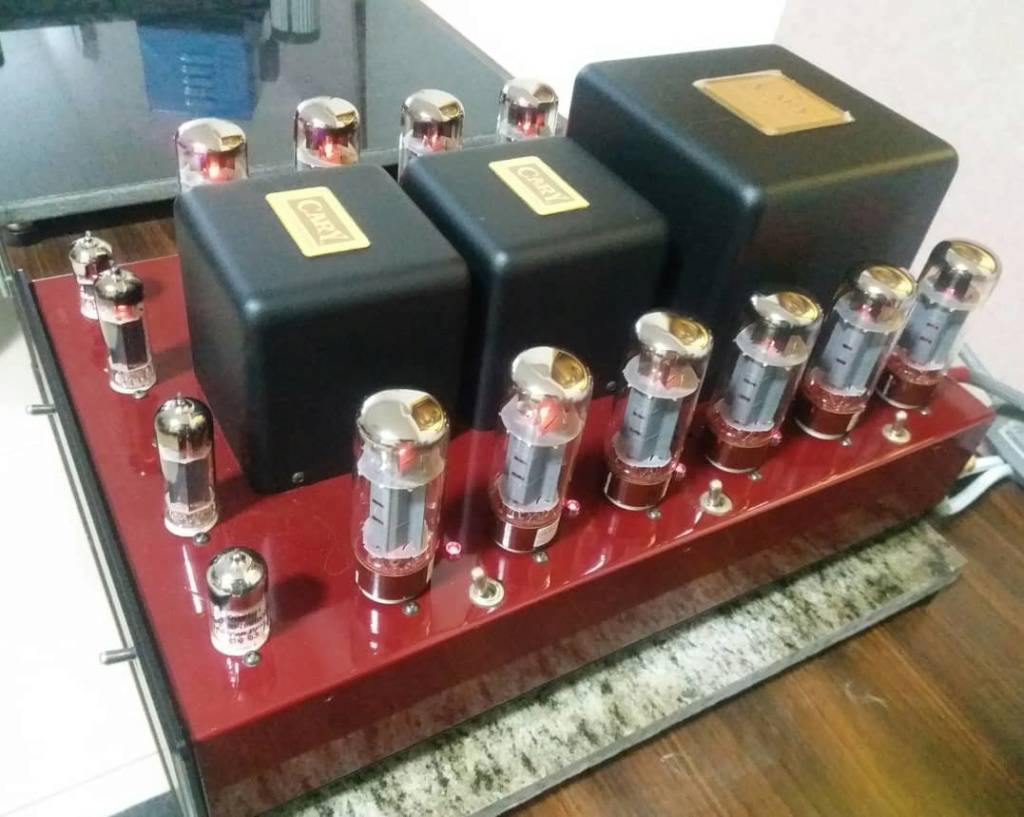
Sitting in my listening chair, I cast my eyes down at the April issue of Classic and Sports Car, which had arrived the day before. It lay open to a feature comparing Maserati’s classic Alfieri-designed 1957 3500GT with the new super-flash 3200GT. There was something familiar about the comparison. Ultralinear is the newer car, tight and capable and ultrafast when bombing the back roads; triode is more like the older car, more gran turismo. But with the CAD-280SA V12, listening in either mode was, as lucky bastard Richard Heseltine writes about the Masers in C&SC, “sensory overload played out on a grand scale.”
Unlike some other mode-switching tube amps I’ve tried in the past (and I don’t mean VTL), the Cary revealed no schizoid-like personality disorder with the change. It was the same amp either way, while evincing the sonic differences I’ve described above. So simple. So straightforward.
Like many dance trip-hop specials, Peace Orchestra 1999 has a lot of special effects shimmering across its soundstage, and all of them were more finely delineated in ultralinear mode—more forward, and popping out of the heady ambience. Try it; you might like it, if on some CDs more than others. Even at 100Wpc, the juicy, 3-D, extremely palpable, wrap-yer-arms-around-it imaging that was so enjoyable and participatory was much in evidence on this and other CDs. And that’s part of the high-end experience, I think—that projection of the music right into your lap, heart, and head.
Female vocals on Peace Orchestra were round, palpable, sweet, airy, and present, floating before me in a large—nay, vast soundstage, the kind that killer tubes do better than practically anything else. But on tracks 8 and 4, where lurk male vocals, I waddled my fanny over to the Cary and flipped the switches into triode. You can’t have everything, they say.
No, but you can have most of it, and the V12 was pretty most—and all for a relatively modest $4k.
A note on SACD overdrive
I’m not sure there’s any finer way of enjoying SACDs than via the Lamm L2 and the Cary CAD-280SA V12 in triode mode. Monk’s Straight, No Chaser (Sony 64886) had me sitting with my big mouth hanging open in appreciation. Somehow—I have no idea why this should have been so, but have no doubt that it was—SACD always sounded better in triode mode. All was revealed, with no loss, no compromise, no nuttin’ except sublime, driving, head-noddin’ musical communication.
The superiority of SACD in triode was apparent even with big orchestral works such as Leonard Bernstein and the New York Philharmonic’s recording of Dvorák’s “New World” symphony (Sony Classical 06393). Even with the volume cranked, triode was all I ever needed from the V12. Notes: “Very satisfying, lots of meaty, beautiful tonal colors, excellent dynamics, and, especially with the Lamm preamp, fabulous extension on top, with those shimmering counterpoint bells chiming in out of the layered and complex mix of the soundstage.”
Just after eight minutes into the symphony’s Allegro con fuoco are some mighty big musical moments. But the sound was so sweet in triode, and the dynamics and bass so fine through the Utopias, that I felt no need to hustle my bustle and switch to ultralinear. Nevertheless, when I did flip the Cary into the higher power mode, its presentation of this recording was tighter, more gutsy—some loss of air, but more precise imaging. The midrange was so Lamm-like: sweet yet extended, so clear and pellucid yet full of detail and nuance—all of the Lamm’s wonderfully positive aspects extend to my description of the V12 as well. Notes: “If this amp measures badly, I’ll eat my shorts—well, my words, anyway. But I’m confident I won’t have to munch any raiment.”
Listening to the last movement of Tchaikovsky’s Violin Concerto (Sony Classical 06062) with Isaac Stern and the Philadelphia Orchestra, I noted: “One hears every detail of Stern’s aggressive playing, even while beautifully integrated into the musical whole. The string tone is superb! Again, I’m overwhelmed by that Lamm-like sense of extension and ultimate sweetness.” The palpable presence, the life, the joy of it all were beyond belief. And does this piece ever move along under Maestro Stern: no lag, no waiting, check your bags and you’re in the air!
Fire it up and let’s go!
I loved the Cary Audio CAD-280SA V12—and such a deal at $4000! At a tenth the price of the huge Cary CAD-1610SE monoblocks (reviewed in the December 2000 issue), with which I had to work mighty hard to get to sound their best in my system, the V12 came off as a bargain of the first order.
My highest recommendation for one cherry of a stereo tube amp
Description
Description:
Two-channel, push-pull tube power amplifier.
Tube complement: two 6922 input tubes, two SV83/EL84 driver tubes, twelve EL34 output tubes.
Inputs: RCA or XLR, switch-selectable.
Outputs: three five-way binding posts, red for 4 and 8 ohm transformer taps, black for ground.
Specified output power: 50Wpc (17dBW) triode, 100Wpc (20dBW) ultralinear.
Input sensitivity: 2V for full output.
Input impedance: 150k ohms.
Noise and hum: 84dB below rated output.
Frequency response at full power output: 20Hz-23kHz, ±1dB.
Power consumption: 420W Operate, 10W Standby.
Dimensions: 12.5″ W by 9″ H by 20″ D. Weight: 85 lbs.
Finish: Clear coat over Jaguar Carnival Red. Front panel: machined, black-anodized aluminum.
Serial number of unit reviewed: 210117.
Price: $4000
